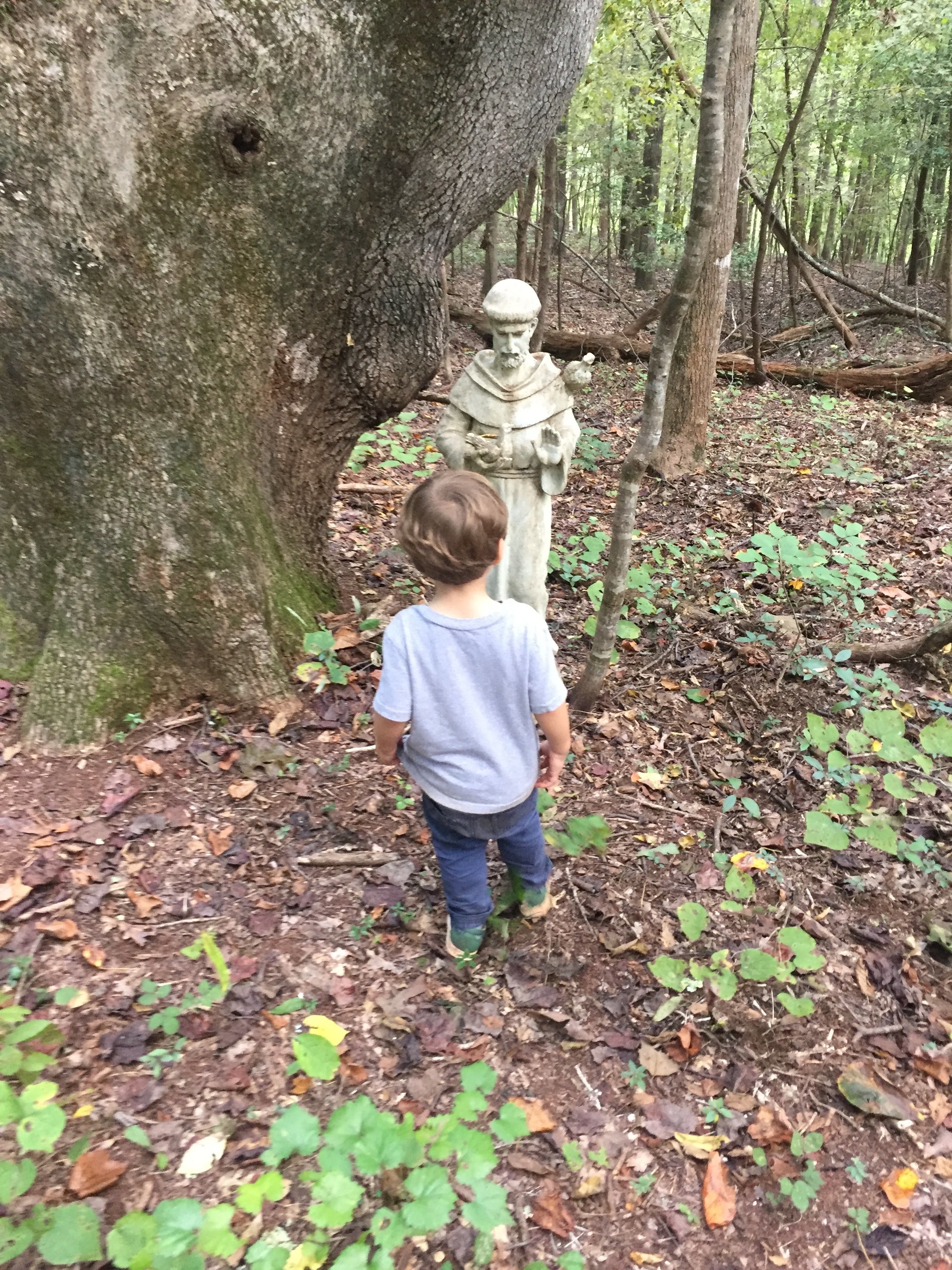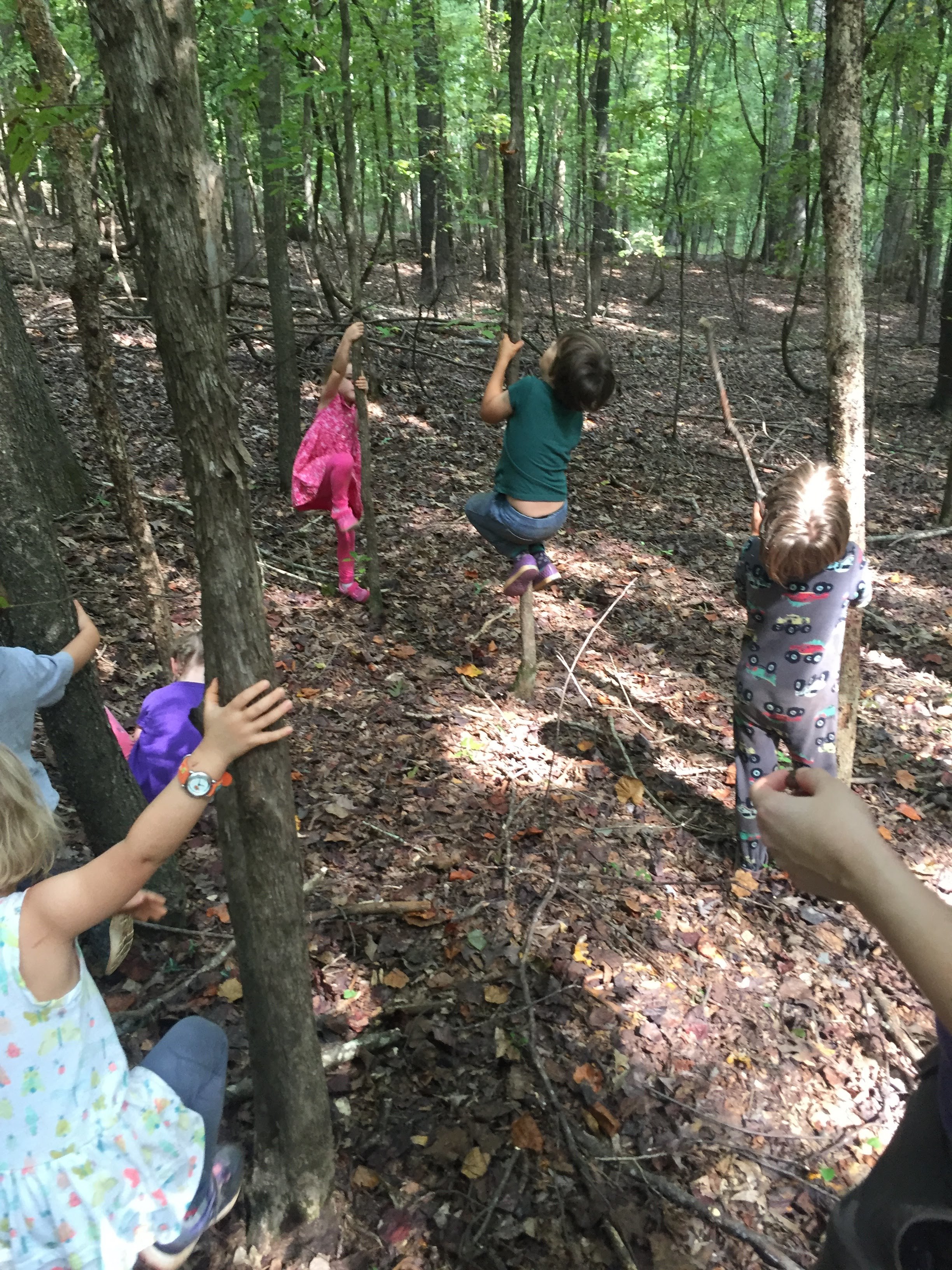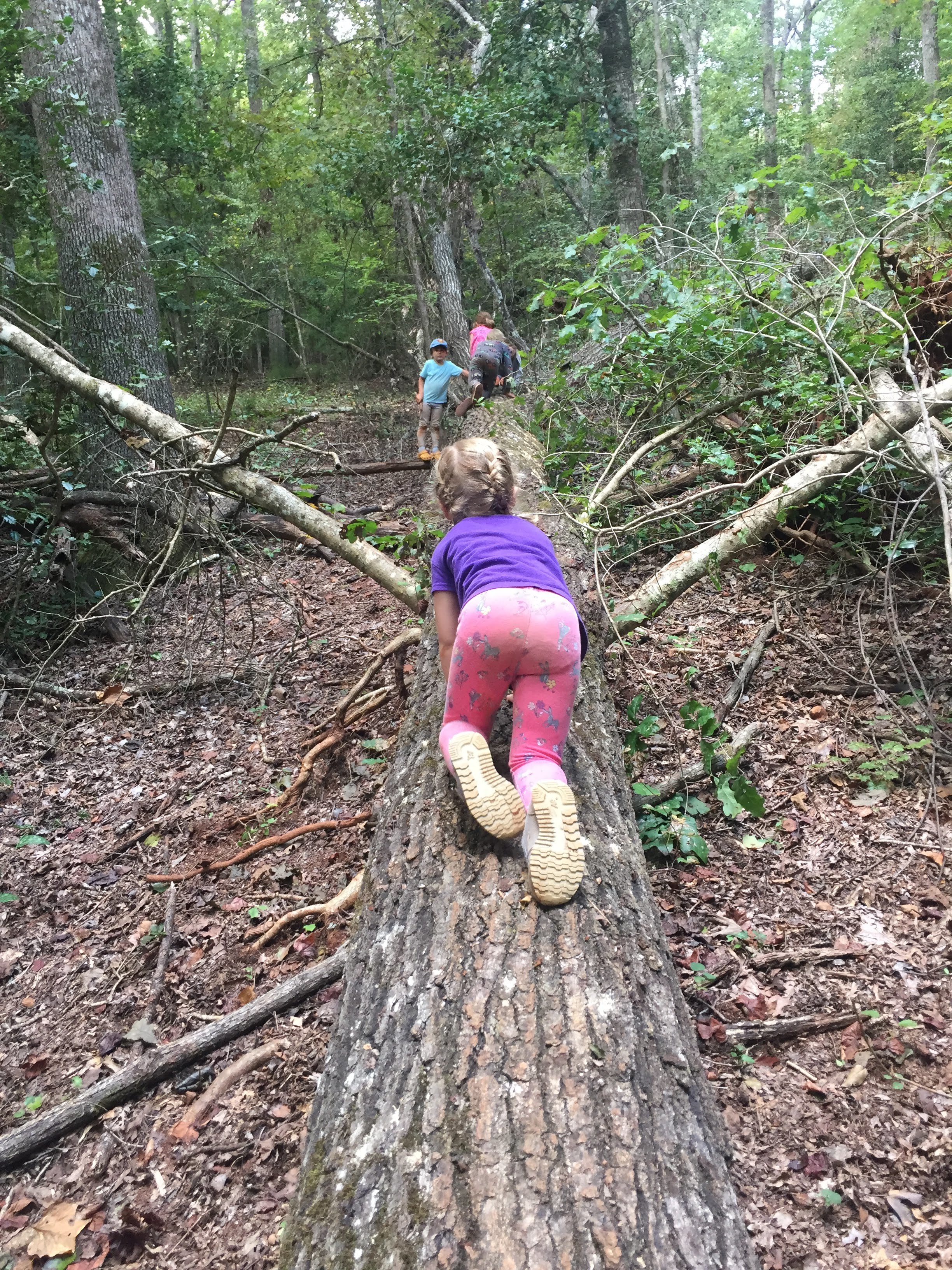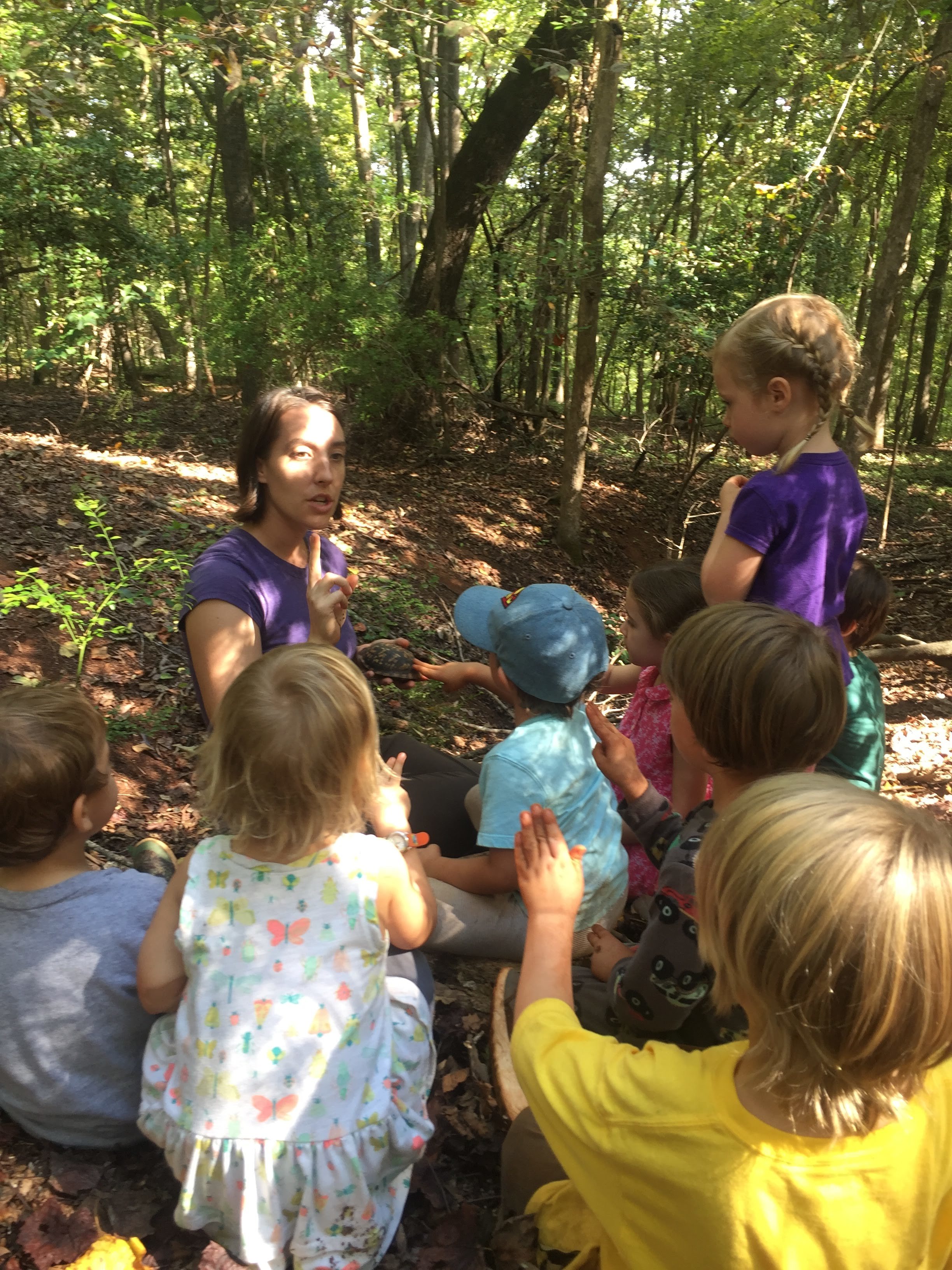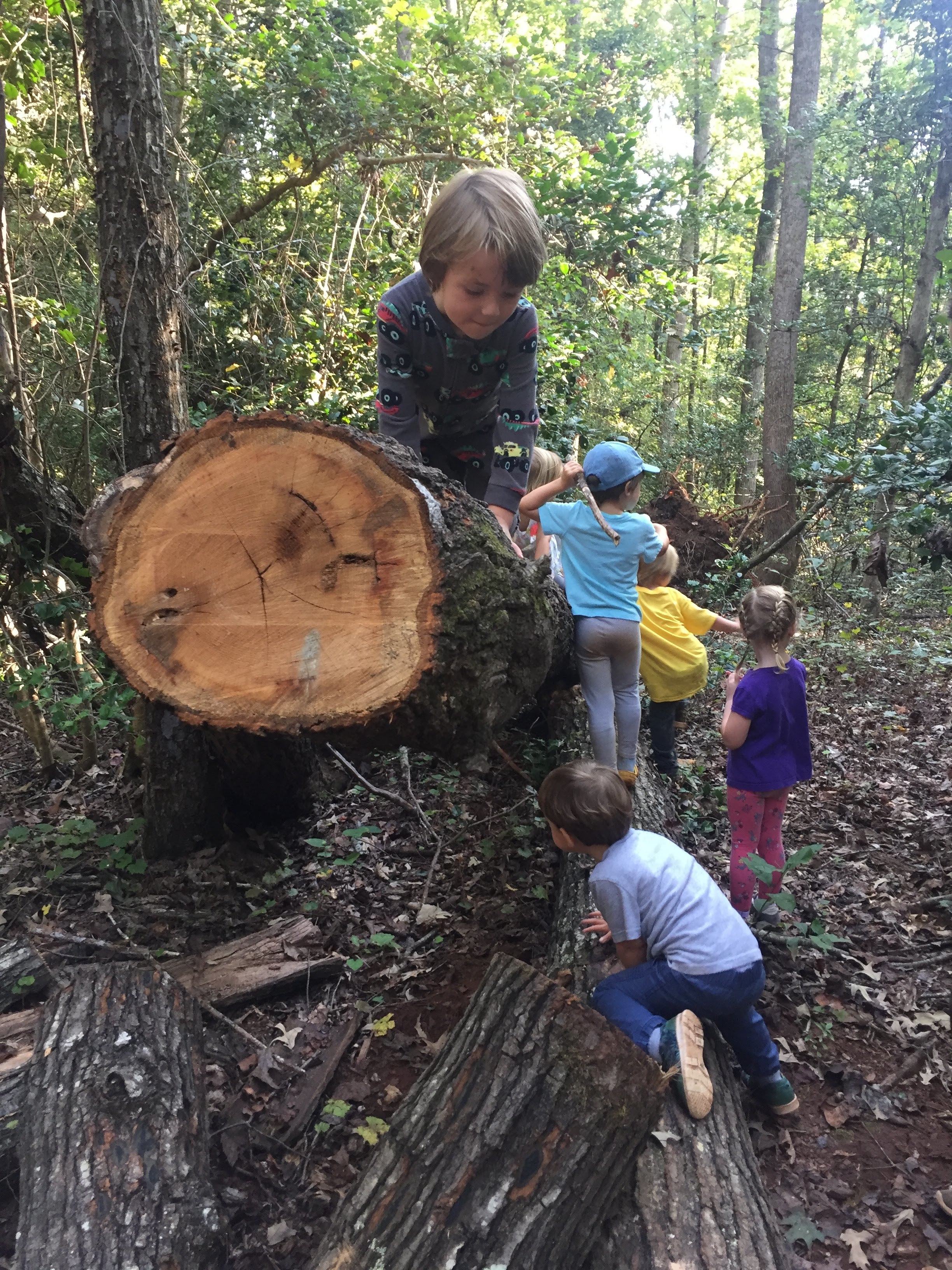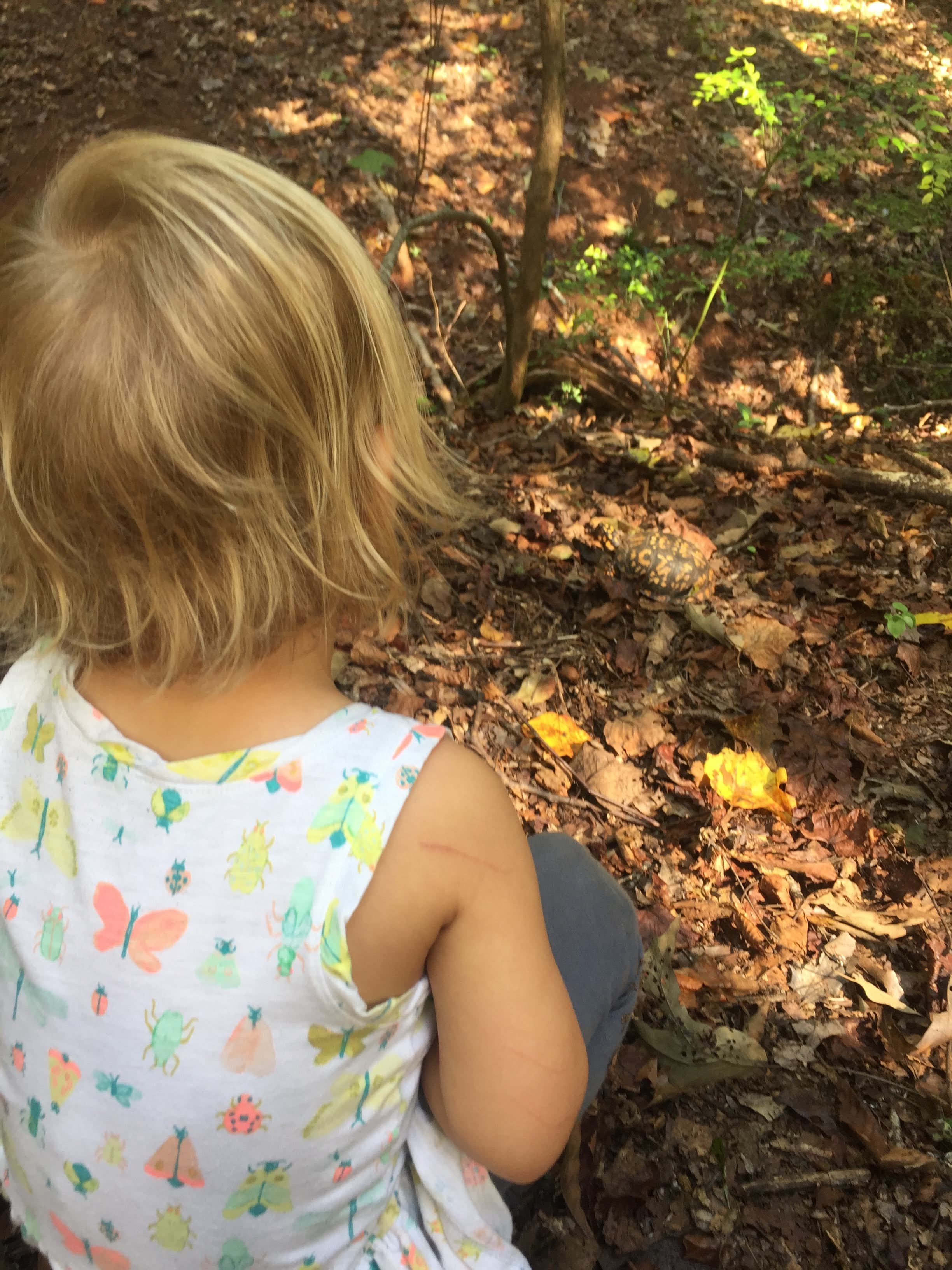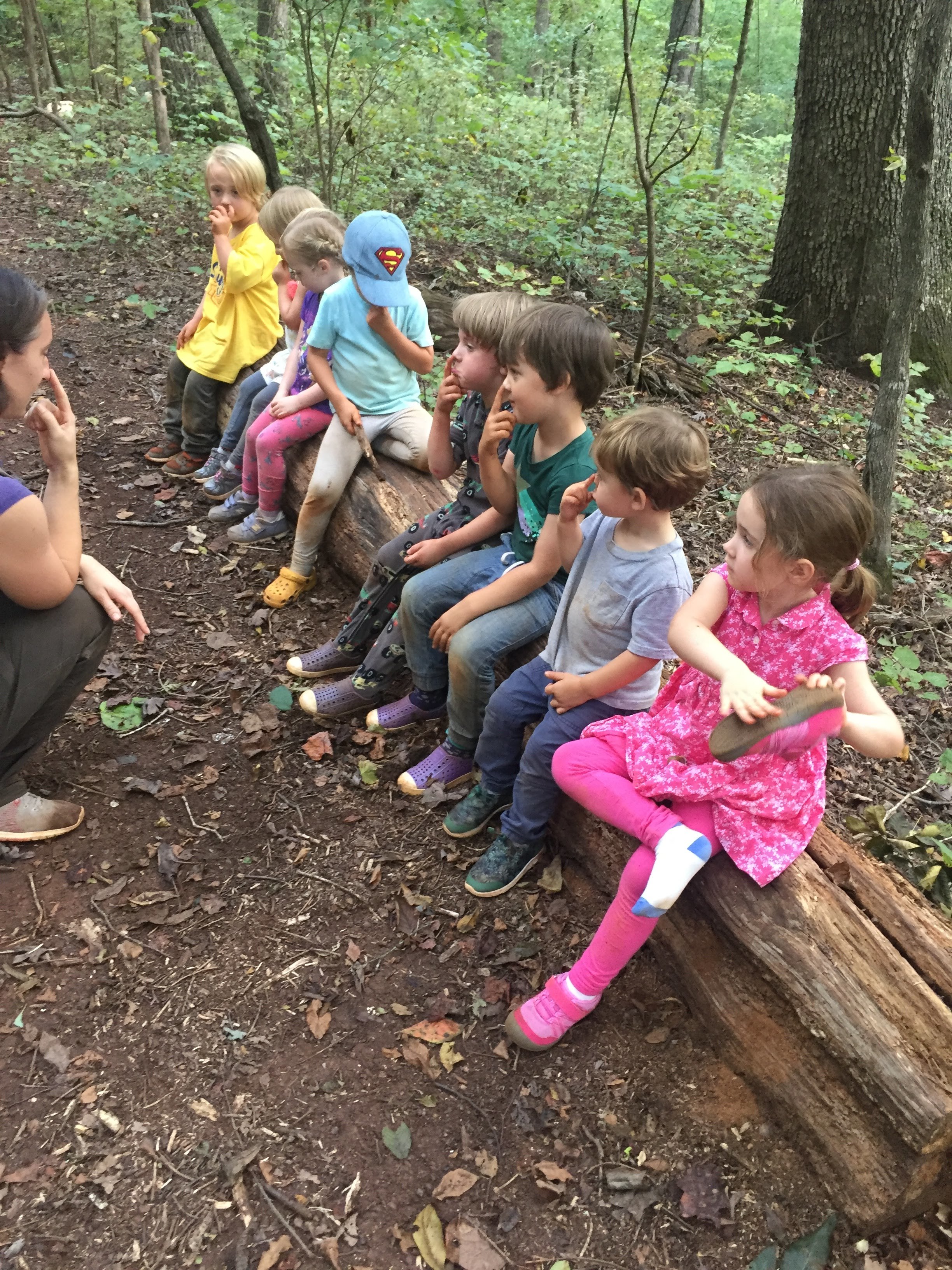It was not hard to decide on the blog post for this week. The animals we encountered throughout the day were captivating and gave us an opportunity to practice our observation skills and develop a deeper understanding of the world we immerse ourselves in each Friday.
We have seen spiders every Friday. Their webs have been part of our play, we uncover them under logs that we roll over, and we get to duck under them as we make our way to Root World and our other play spaces. Today, we caught a spider during the first part of our morning and put it in a viewing jar Amy brought. Having the spider isolated in a container changed how children observed the spider and spoke about it. Prior to this, we had not spent much time watching spiders. Yet, once the spider was in the jar children began to notice its shape and color, ask questions about how it was moving, and even began to personify it. They added a second spider and wondered at the differences in color, and how the two spiders would interact. A story of the spiders was beginning to emerge, but we were at a point in our day when we needed to transition from morning drop-off to our morning play and we made the decision to release our spiders. As teachers, we make note of developing threads of interest. This particular thread is important because when children observe the small things and make an effort to tell the story of their life, they grow empathy with things that are not like themselves. Teachers will continue to look for opportunities to grow this thread of “a spider’s life”.
Everyone who wanted to have a turn, held the turtle! All the children wanted to name the turtle different things and so they did! It’s very hard for children this age to have peers playing differently than them so it was impressive to watch them get comfortable with “Turtle-y” also being called “Batman” and “Fancy Turtle”, but they did!
Most families probably heard something about the other captivating animals we encountered during the day. The eastern box turtle and the copperhead snake that passed through Root World were captivating in a way that was different from the spiders. Since it is less common for us to see these types of animals, they do capture our attention in a different way than the spiders. For the teachers, our attention is on how to guide children into an interaction with these animals that is safe and meaningful for the children and the animal. In the case of the turtle, Amy has years of experience working with and showing children how to touch and handle box turtles. The teachers chose to provide children an opportunity to touch and hold the turtle, and learn about it from this hands-on observation. We ask children to take care of each others’ bodies during Forest Kindergarten, and we extended this concept to interacting with the turtle. The children were able to regulate the excitement in their bodies and show an ethic of care for the turtle by gently touching it and carefully cradling it when they held it. When it was time for us to let the turtle continue on its journey, the teachers and children had a discussion about how we should release the turtle. The children wanted to let it go nearby and watch where it went, but agreed to be still and just watch it move on its own without following it. We wondered where the turtle would go, if it was just visiting Root World or if Root World is its home, and we marveled at how fast a box turtle really moves. The box turtle is now our neighbor at Root World, and we all wonder if we will meet again!
Our copperhead encounter was necessarily different, but also provided an essential learning opportunity for children and teachers. The copperhead was first spotted by our adult Forest Helper, Jess, when making its way toward where we were playing at Root World. All the teachers quickly agreed that the priority was to move children out of the area because a venomous snake is a hazard of the forest. It was an absolutely stunning snake, with many of the characteristics that attracted us to the turtle. Like the box turtle, its camouflage was incredible, capturing the feeling of dappled sunlight on the leaf litter of the forest floor. It moved gracefully and easily through the forest, just like the turtle. Yet, while children may have felt a bit risky touching and holding the turtle, the same type of interaction with a venomous snake would have been a hazard. Teachers are careful to identify hazards vs. risks, and recognize that hazards are things that can cause a child to be seriously ill or injured whereas a risk may cause a small scrape or bruise. Once we had removed children safely away from the hazard, we had a discussion with the children about what had happened. It is important for children to understand that teachers keep them safe at Forest Kindergarten and the methods teachers use to keep them safe. We use the word “pineapple” when we need children to stop what they are doing and come to a teacher. Children know this is a word for the adults to say, and we continue to work on making sure they respond immediately. We reminded children that we used this word when the copperhead was spotted, and that it was important for them to go to the teacher who said it because the animal we saw was one that was not o.k. to touch. We spoke about what to do if they see a snake, and one child let us all know that the best thing to do if anyone sees a snake is to leave it alone, back away from it, and let a teacher know. We all agreed that snakes were not o.k. animals to touch, and the teachers showed children the picture of the copperhead. We will continue to help children know what is ok to touch and what is not ok, and be vigilant as teachers in identifying risks vs. hazards.
Some of the older children were excited to help Amy lower a small dead tree in the new site we explored.
This is a longer blog post, but before ending it reflecting on these different animal interactions is important. All of the animals we encountered during this session are part of the life and health of the forest. We are able to interact with them in different ways and children are learning how to distinguish these. Being a little afraid of the snake, or the spider, or even the turtle is o.k. Yet, as we support children in the learning process we want to avoid creating an unnecessary fear. Teachers will be firm but calm when ensuring that children understand not to pick up or touch snakes or other animals we identify as hazards. We will help children learn that they have a responsibility of care to the animals that they do touch, and we will continue to discuss with children how they feel about the animal neighbors we encounter in the forest.



